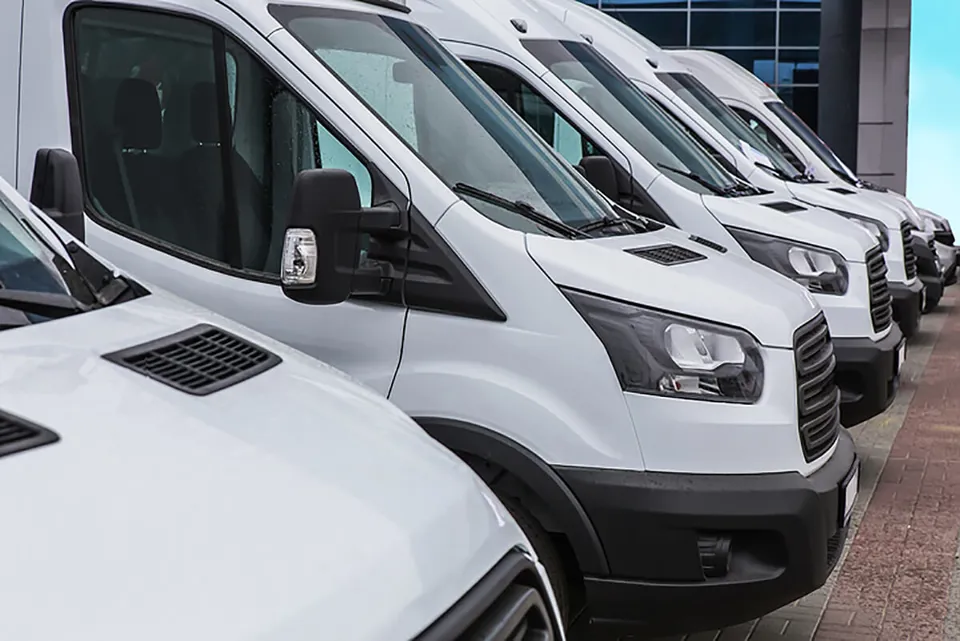With Government targets for electric van sales to start from next year, fleets fear that diesel volumes could be cut to avoid financial penalties.
The Government is introducing its so-called zero-emission vehicle (ZEV) mandate from next year.
UK manufacturers will need to ensure at least 10% of the vans and 22% of the cars they sell are battery electric vehicles (BEVs) in 2024.
If a company misses the target, they will be made to pay the Government £15,000 for every vehicle that doesn't comply.
A consultation on the ZEV mandate plans, which were published by the Department for Transport (DfT) in March, but ministers are yet to respond after it closed in May.
Latest market insight
The market share for new electric vans has fallen year-on-year, according to the latest figures from the Society of Motor Manufacturers and Traders (SMMT).
Despite demand for new battery electric vans soaring 94.6% to 1,489 units last month, compared to July 2022, and having increased 16.1% year-to-date (10,292 units versus 8,865), market share has decreased from 5.4% to 5.2%.
As a result, the anticipated BEV market share for 2023 has been reduced from 7.4% to 7.1% by the SMMT. However, it says that BEVs are still expected to make-up 11.2% of all new van registrations next year.
Duncan Webb, fleet director at the AA, believes that the decrease in market share for electric vans was more likely down to more diesels arriving in the country than a lack of appetite for zero emission vans.
However, he told Fleet News at 10: “We can’t hide from the fact that the TCO (total cost of ownership) model has moved, because of the way interest rates have moved and because of a little bit more negative outlook on RVs (residual values).
“Those two factors are really starting to play into the TCO model of a van in particular, and I think that is weighing on a lot of people’s minds right now.
“The thing that probably worries me most is we’re just over 5% (market share) and the legislation next year is meant to baseline at 10% EV production for vans and that means you’ve got to double from where you’re currently at.
“I’m worried that the industry tries to shrink its way out of the problem by not selling diesel vans rather than grow its way out the problem by selling electric vans. That’s a real fear.”
Elaine Pringle, fleet manager at Scottish Water, also believes that the demand is there from fleets for plug-in vehicles but says that the technology still falls short on some tasks.
She explained: “For us in the utility sector, the main challenge is the payload requirements and the ability to tow... so whilst at the moment we’re still seeing our percentages (of electric van adoption) stay the same, I think that it will start to slow down as we start to move into the more difficult to transition vehicles.”
Scott Kennedy, franchise strategy manager at Herd Group, says that there are still several “hurdles to overcome” for electric van adoption.
“I feel like we’ve lost a little bit of the trust in electric vans,” he said. “I think we just need to build that back up again, start working with fleet managers and say that this is where we can start to start to implement electric vans.”
While large fleet operators have been able to adopt an electric drivetrain where it fits, he says SMEs (small and medium enterprises) are sometimes finding it more difficult from a cost and operational perspective.
He added: “I feel like we probably need the next generation of electric vans to come through until we see a larger adoption on that side, and we do need things like infrastructure and cost to be better and align more with diesel and petrol.”
David Petts, Ford Pro EV and connectivity product manager, explained that the same issues being faced by UK van fleet managers were being seen across Europe and north America.
He told Fleet News at 10: “In terms of technology, bigger batteries will be coming for a whole range of different vehicles... you will get to the real world mileage that you’re wanting.
“The downside is bigger batteries weigh more... typically, an E-Transit will weigh 400 kilos more than the equivalent 3.5-tonne ICE (internal combustion engine) vehicle.
“A bigger battery will give you more range, but you’re probably looking at another 200 kilos loss.”
Electric van 4.25 tonne derogation
In terms of payload, the Government introduced a concession allowing licence holders to drive an electric van up to 4.25 tonnes.
In 2018, UK law was changed so that the weight limit for Category B driving licence holders driving alternative-fuel vehicles (AFVs) could be increased from 3.5t to 4.25t. Such vehicles are also exempt from O licence rules.
In June, the Department for Transport (DfT) told Fleet News that the licence flexibility “remains in place” and the Government has “no plans" to remove this "flexibility for zero emission vehicles", as it continues to support the uptake of zero emission vans.
Explaining the rule change, Petts says that fleets using 4.25-tonne electric vans more than 62 miles from their registered base would, however, require a tachograph.
He added: “There is no ‘O’ licence required on a four-and-a-quarter-tonne BEV and that’s probably where some of the confusion comes in. If you have a tacho, you assume you have an ‘O’ licence, but that’s where the BEV differs.”
Another point he stressed was that 4.25-tonne electric vans have to comply with the HGV MOT test, but do not have to conduct the eight-week vehicle checks HGVs do.
Furthermore, fleets are unable to use the heavier electric van for towing and the vehicles are restricted to 56mph.
Petts said that Ford, along with other manufacturers, was lobbying the Government to make the five-hour training requirement optional and remove the tachograph requirement.
Fleet News at 10 features a guest panel of leading fleet decision-makers discussing the month’s biggest news and hottest industry topics.
The next webinar take place on Friday, September 29, from 10-11am. Register for free here.





















Login to comment
Comments
No comments have been made yet.